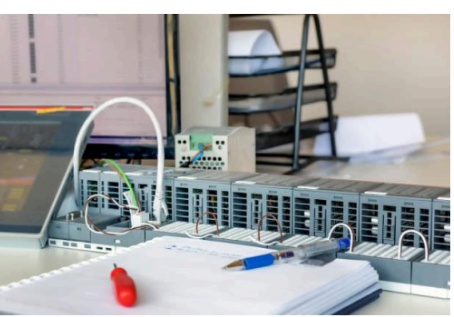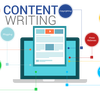In the realm of industrial automation, the adoption of advanced programmable logic controllers (PLCs) has become synonymous with efficiency, productivity, and innovation. These versatile devices serve as the backbone of modern manufacturing, enabling seamless control and optimization of complex processes across a wide range of industries.
Understanding the Role of PLCs in Industrial Automation
At their core, programmable logic controllers are specialized computers designed to automate the execution of tasks traditionally performed by electromechanical relays and switches. By utilizing a combination of digital and analog inputs and outputs, PLCs can monitor sensors, control actuators, and execute logic-based operations to regulate industrial processes with unparalleled precision.
Evolution of PLC Technology
The evolution of PLC technology has been nothing short of remarkable. From their humble beginnings as rudimentary relay-based systems in the 1960s to the sophisticated microprocessor-driven controllers of today, PLCs have undergone continuous innovation and refinement. Modern PLCs boast powerful processors, extensive memory capacity, and a plethora of communication interfaces, making them indispensable tools for industrial automation.
Key Components of a PLC System
A typical PLC system comprises several key components, each playing a crucial role in its operation: CPU (Central Processing Unit): The brain of the PLC, responsible for executing control logic and coordinating communication between various components. Input Modules: These modules interface with sensors and other input devices to detect changes in the physical environment. Output Modules: These modules interface with actuators and other output devices to control industrial processes. Memory: Stores program instructions, data, and system parameters necessary for PLC operation.
Communication Interfaces:
Facilitate communication between the PLC and external devices, such as HMI (Human Machine Interface) panels, SCADA (Supervisory Control and Data Acquisition) systems, and other PLCs. Advantages of PLCs in Industrial Automation The adoption of PLCs offers numerous advantages over traditional relay-based control systems:
Flexibility:
PLCs can be easily reprogrammed to accommodate changes in production requirements or process parameters, providing unmatched flexibility and adaptability.
Reliability:
With no moving parts and built-in diagnostics, PLCs offer greater reliability and uptime compared to electromechanical relays.
Scalability:
PLC systems can be scaled to accommodate the needs of small-scale operations as well as large-scale industrial facilities, making them ideal for businesses of all sizes.
Integration:
PLCs seamlessly integrate with a wide range of industrial equipment and software platforms, enabling holistic automation solutions that span across multiple systems and processes. Remote
Monitoring and Control:
With built-in networking capabilities, PLCs enable remote monitoring and control of industrial processes, allowing operators to oversee operations from anywhere in the world. Applications of PLCs Across Industries The versatility of PLC technology makes it applicable to a diverse array of industries and applications:
Manufacturing
In the manufacturing sector, PLCs play a central role in optimizing production processes, improving quality control, and reducing downtime. Whether it's controlling assembly lines, regulating temperature and humidity in cleanrooms, or coordinating robotic arms in automated warehouses, PLCs enable manufacturers to achieve unparalleled levels of efficiency and productivity.
Energy Management
In the energy sector, PLCs are instrumental in managing power generation, distribution, and consumption. From controlling turbines and generators in power plants to monitoring energy usage in commercial buildings, PLCs help utilities and facilities optimize energy efficiency, reduce waste, and minimize environmental impact.
Transportation and Logistics
In transportation and logistics, PLCs drive automation and efficiency across supply chains, warehouses, and distribution centers. Whether it's controlling conveyor belts, sorting packages, or managing inventory levels, PLCs streamline operations, improve throughput, and enhance overall logistics performance.
Building Automation
In the realm of building automation, PLCs are used to control HVAC (Heating, Ventilation, and Air Conditioning) systems, lighting, security systems, and other building services. By optimizing energy usage, maintaining comfort conditions, and ensuring occupant safety, PLCs help create smarter, more sustainable buildings that meet the needs of occupants while reducing operational costs.
Future Trends in PLC Technology
Looking ahead, several trends are poised to shape the future of PLC technology: Industry 4.0 and IIoT Integration The emergence of Industry 4.0 and the Industrial Internet of Things (IIoT) is driving increased connectivity and interoperability between PLCs and other industrial devices. By leveraging data analytics, machine learning, and cloud computing, PLCs will become even more intelligent and adaptive, enabling predictive maintenance, real-time optimization, and autonomous decision-making.
Edge Computing and Edge PLCs
The rise of edge computing is leading to the development of edge PLCs capable of processing data closer to the source of generation. By reducing latency and bandwidth requirements, edge PLCs enable faster response times and more efficient use of network resources, making them ideal for applications that require real-time control and monitoring.
Cybersecurity and Resilience
As PLCs become more interconnected and exposed to cyber threats, cybersecurity will become an increasingly critical concern. Future PLCs will incorporate robust security features, such as encryption, authentication, and intrusion detection, to safeguard against cyber attacks and ensure the integrity and availability of industrial processes.
Sustainability and Energy Efficiency
With growing emphasis on sustainability and energy efficiency, future PLCs will focus on optimizing resource usage, minimizing waste, and reducing carbon emissions. Through advanced energy management algorithms, adaptive control strategies, and integration with renewable energy sources, PLCs will help usher in a new era of eco-friendly and sustainable industrial automation.
Conclusion
In conclusion, advanced programmable logic controllers (PLCs) represent the cornerstone of industrial automation, enabling businesses to optimize processes, improve efficiency, and drive innovation across a wide range of industries. With their flexibility, reliability, and scalability, PLCs empower organizations to stay competitive in today's rapidly evolving market landscape. As we look to the future, PLC technology will continue to evolve and innovate, ushering in a new era of smart, connected, and sustainable industrial automation.


No comments yet